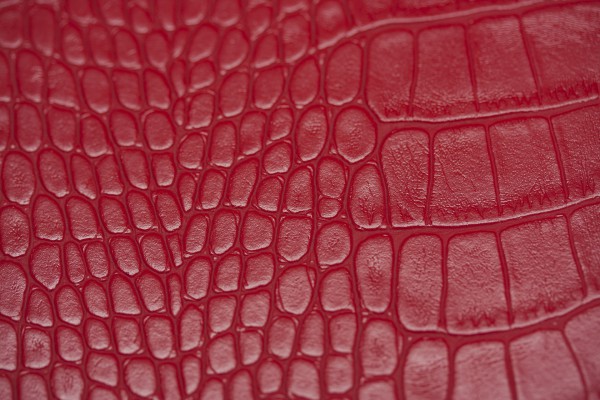Accounting for taste
Are there any viable alternatives to exotic materials and leathers?
Unusual materials on board superyachts is just one of the aspects which epitomises the refinement of superyacht interior design and its rather eccentric trends. The task of creating an interior that is not only different, but packed with some of the world’s most sought-after materials and textures can certainly bring up some truly fascinating results, but what are these materials and what are they like to work with?
It would seem that exotic materials are attractive, not only because of their unusual appearance, but also for their rarity and procurement exertions. The usual suspects include alligator skin, taken from the animal’s underside; lizard skins; stingray, which creates a stunning beaded ombré effect; ostrich skin and countless other which all have their own unique textures and patterns.
But, in terms of practicality, it would seem that complications can arise very early on in the procurement process for materials of distinction such as the exotic leathers listed above, which are not only difficult to track down but each come with their own set of logistical nightmares. The importation of exotic leathers, for example, is heavily regulated by the Convention on International Trade in Endangered Species (CITES), and quite rightly so as unfettered access to the globes diminishing wildlife stocks would only end in devastation and the extinction of some of the world’s most precious species.
According to the CITES Trade Data, from 2011-2015 the most commonly exported reptile skin was from the caiman crocodile, within this period just under 3.5 million of them were exported around the globe, followed by alligator skins, of which two million were exported within this five-year period, followed by python.
However, when restrictions are too stringent or the importation of a certain material is prohibited, are counterfeit leathers and hides really a viable option? “The quality of leathers with prints that imitate stingray, crocodile or snake is improving, so substitutes are getting better,” said Perry van Hirtum, manager of interior engineering at Heesen Yachts in issue 174 of The Superyacht Report. “There are also artists who can paint several effects on panels and with some of them it’s very difficult to tell the difference between these are real leather.”
There is an interesting debate ongoing that concerns the use of counterfeit leather in order to eradicate natural imperfections in the skin. “Strangely enough in some instances, synthetic materials are more expensive than the real ones,” says Elliot Parker, sales and marketing manager at luxury games make Geoffrey Parker. This is because many clients would prefer a material that looks perfect, rather than one that has natural imperfections.”
“Clients expect their yacht to be built and decorated to the highest standards and this means with the top luxury materials,” continues van Hirtum. “In some cases, however, we use a teak alternative for tender garages, as it is very easy to clean and maintain.”
Making the process even more tricky, these sought-after materials are often particularly difficult to work with, onyx, for example, is naturally very brittle, as are some forms of quartz, which is subject to breakage during installation.
A wildly popular material at the moment is shagreen (stingray skin), which also offers is own shortcomings as a material. “The skins are very small and there is a kind of bone in it which makes it very difficult to work with,” says van Hirtum. “A stingray skin costs between €250 to €350 each and you only have approximately 250 x 100mm net material, meaning that a large cabinet might need more than 200 skins, and this is only the material cost.” This means that per square metre of shagreen, the cost can range from €4,000 to €10,000.
So, while there are alternatives out there that could not only reduce cost and procurement headaches, is this really a viable sell to the superyacht market? Ultimately, we are dealing in an industry where only the upmost luxury will suffice, but it seems that it very much depends on the values of a particular owner. “It’s not a real necessity for a lot of clients, but if a client wants to have special materials it’s almost impossible to convince them to use something else or an artificial piece,” says van Hirtum. While it’s clear that the inclusion of exotic materials can be problematic, it appears that opting for alternative materials isn’t wholly accepted by the industry. Despite the increased costs, the subject of authenticity plays a massive role in interior design.
NEW: Sign up for SuperyachtNewsweek!
Get the latest weekly news, in-depth reports, intelligence, and strategic insights, delivered directly from The Superyacht Group's editors and market analysts.
Stay at the forefront of the superyacht industry with SuperyachtNewsweek
Click here to become part of The Superyacht Group community, and join us in our mission to make this industry accessible to all, and prosperous for the long-term. We are offering access to the superyacht industry’s most comprehensive and longstanding archive of business-critical information, as well as a comprehensive, real-time superyacht fleet database, for just £10 per month, because we are One Industry with One Mission. Sign up here.
NEW: Sign up for
SuperyachtNewsweek!
Get the latest weekly news, in-depth reports, intelligence, and strategic insights, delivered directly from The Superyacht Group's editors and market analysts.
Stay at the forefront of the superyacht industry with SuperyachtNewsweek




